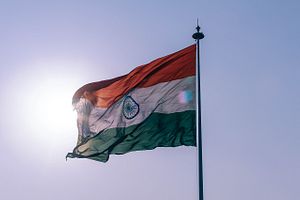When the Indian state of Haryana under then-Chief Minister Bansi Lal put a ban on student union elections in colleges and universities in 1996, right-wing institutions had already started putting their weight behind the decision. Around 1994, while I was still in school — under a rigidly right-wing administration — in the Karnal district of Haryana, our teacher, who used to arrange debates and elocutions in the school, called for students interested in an upcoming debate on whether colleges should have student union elections or not.
I went up to her and told I was interested. I went home and prepared in support of such elections, with help from my father preparing arguments. The next day when I went up to her, she gave me an already prepared speech — ironic given the goal of a debate — opposing student union elections. When I told her that my point of view was different and I wasn’t prepared to oppose, she told me that I could no participate.
This is the gist of what many institutions want from the youth in India today: unthinking, nonchallenging students who follow the instructions and agenda set by the state.
When Nikhila Henry writes about the youth unrest that has arrested India in the recent past in her book The Ferment, Haryana rightly feels like a gaping hole. After 22 years, the current government is considering lifting the ban on student union elections. For years in India under the rule of the centrist Indian National Congress, being apolitical was actively encouraged. Participating in politics was long a privilege of the upper castes in India, while many on the margins are pushed to the edge. Once the right-wing Bharatiya Janata Party (BJP)-led National Democratic Alliance (NDA) came to power at the center in India in 2014, however, all pretenses were gone. India has seen one agitation after the other, led in many cases by the youth of the nation. No idea has been left unchallenged, from caste hegemonies to the idea of freedom itself.
Henry’s is a very well researched book, with painstaking statistics to clearly lay out the problems plaguing India, to a point that it becomes impossible to ignore what lies in front of you. Her best work is on the caste-based discrimination that runs deep in society and inequities that run with it. She quotes from the Indian Exclusion Studies Report released by the Center for Equity Studies in 2016, which found that the rate of landlessness was highest among Dalits (the lowest in the Indian caste system), among whom 57.8 percent did not own land. Henry starts with one of the most moving chapters and writes in detail about the massive protests that broke out after Dalit scholar Rohith Vemula’s suicide in southern India’s University of Hyderabad, as a result of what she describes as systematic caste-based discrimination. Her personal conversations with Rohith and his comrades paint a vivid picture of what happens even after lower-caste students get admission in universities, and how the system tries to keep them disempowered.
In modern Indian cities, most of the young people who belong to general categories resent reservations for the lower castes; it is easy for them to not know their particular caste. It is another high-caste privilege. Yet every Brahmin, the highest in the caste hierarchy, would always know that they are Brahmins, just as every Dalit would know that they are Dalit, the lowest. The system sets the rules of social interaction and boundaries for them, even in places of education and work. This is the most important thing about Henry’s book: its precise analysis on many such complex issues. Pretty early on in the book, while explaining Rohith’s case, she writes: “The reality, however, was starker: caste was embedded in India’s modernization process.”
As a journalist who has spent considerable time in Kashmir, I was also keen to read her observations of the 2016 uprising against the Indian state in Kashmir, which has been asking for freedom. She made an effort to travel through Kashmir and talk to the youth to get a sense of the disconnect and anger. For a Kashmiri, it is almost respectful that her gaze and language is of an outsider and observer with an open mind — although one wonders if she refers to Kashmir as “India’s Paradise” sarcastically or otherwise. Yet she paints a vivid picture in very simple words to explain the discontent among the youth in Kashmir, and also of the role of education in the unrest.
It also makes for an interesting contrast. For the disempowered in India, education is the only way out to dream of a respectable and financially comfortable future. There is no such guarantee in Kashmir. But the young matter everywhere.

































